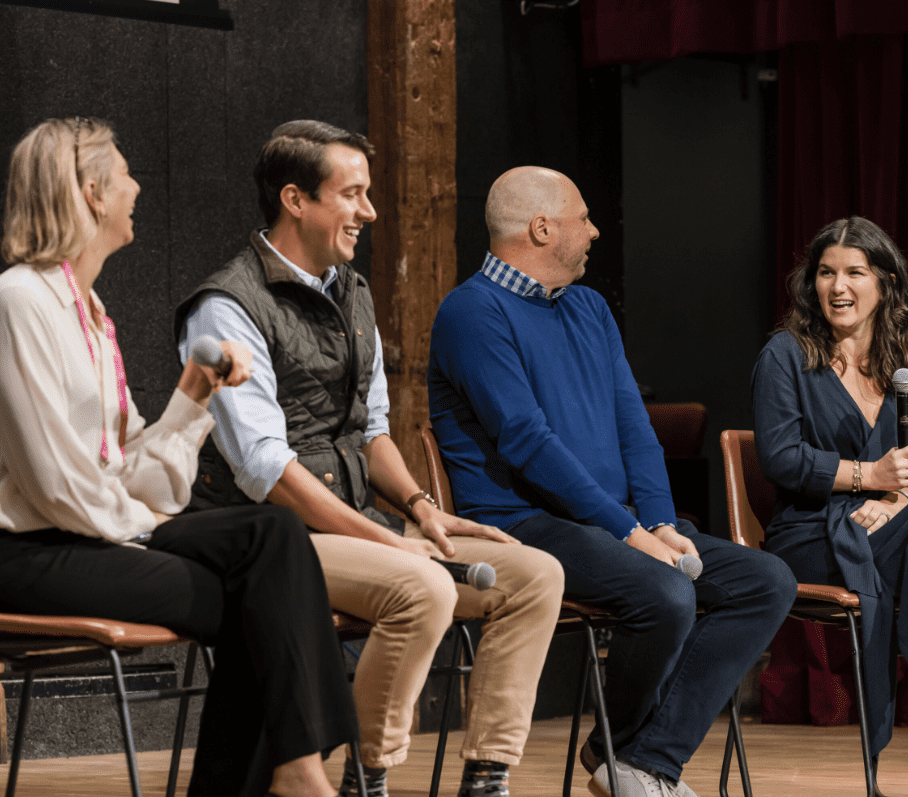The historic marketing funnel, developed in the 2010s, no longer reflects modern B2B buying behavior. This traditional approach treats buyers as leads to be captured. Yet today’s actual buyer adoption process isn’t about conversion, but rather about buyer-seller alignment.
The buyer journey is more akin to moving up a credibility ladder where each rung is another level of trust earned from prospects. Instead of pushing them through stages, they’re given reasons to believe the value proposition. The buyer is encouraged, through evidence and external validation, to select a specific option. That’s why the credibility ladder represents a far deeper perspective that the funnel simply cannot provide.
In B2B marketing, much has been written about purchase intent and the power of brand. The buyer-aligned credibility ladder is a mental model that reflects how both intent and brand trust accumulate over time. Buyers climb this ladder, with each rung a step in a complex and sometimes lengthy path, and it’s the seller’s responsibility to signal credibility, alignment and trust.
The Credibility Ladder
1. Problem Development
Buyers sense friction or inefficiency. They may or may not yet have a defined name for the problem.
2. Influence Absorption
They listen to industry voices (including SMEs and thought leaders) to frame the problem and scan potential approaches. The idea begins to form.
3. Passive Consumption
They consume trade media and social channels, read newsletters, attend conferences or listen to topical podcasts. Buyers aren’t evaluating anyone directly but gathering context as the need becomes more acute.
4. Peer Validation
As intent forms, buyers seek feedback and referrals from peers. They’re no longer reliant on recommendations fed to them by sellers. Today’s buyers proactively consult “dark social” (peer Slack groups, Reddit threads, trade groups, closed communities, etc.), which reflect high-trust spaces where detailed and unfiltered information can be obtained before ever contacting the seller.
5. AI Research
AI is used to gather vendor lists, compare solutions, get pricing intelligence and summarize options. Buyers receive AI-generated recommendations based on their specific needs before ever speaking with sellers. LLMs, despite their notoriety for fabrication, represent an important step in the evaluation process that didn’t exist in 2021.
6. Direct Evaluation
Often this is the buyer’s first contact with the seller, long after an initial opinion has been formed and validated externally. (The funnel fails to adequately account for much of the previous behaviors and activities that have led to this point.) The customer more actively explores shortlisted solutions, visiting AI- and peer-recommended websites before engaging sales reps.
7. Experience and Evidence
Evidence-gathering, while closely related to previous steps, merits its own rung. Buyers want to see the solution via demos and also engage in real-world scenarios that reduce perceived risk (i.e. pilots.) They want performance benchmarks, proof of positive outcomes, ROI modeling and more, to make the economic justification for their purchase.
8. Commitment
The buyer has been convinced through validation and evidence. They’re now betting both their dollars and professional credibility.
9. Evangelism
Post-purchase evangelism means that buyers champion the brand. While not everyone ascends to this step, sellers must create positive experiences and develop strong relationships toward this goal.
Considerations
The credibility ladder does not dictate a specific sequence. It represents a mental model, not a CRM workflow, designed to map trust-building steps with likely buyer intent. Unlike the funnel, it places the buyer at the center and gives them control of the journey, a situation which more accurately reflects most B2B purchasing situations.
In the funnel, the buyer is implied to ‘fall’ in a unidirectional path towards inevitable purchase. The ladder, in contrast, represents a bi-directional journey. The buyer can choose to ascend, descend or pause at any step, sometimes for an extended duration. The buyer may even move from near the top of the ladder back down towards the bottom, a real-world situation that occurs frequently.
B2B also involves buying committees and multiple stakeholders, with each person occupying and prioritizing a different rung. Purchasing decisions aren’t 100% based on ROI-based, logical decisions. Politics, emotion and personal relationships often supersede any rational buying.
Actions Sellers Must Take
Sellers must develop their market well before buyers contact them.
-
The importance of brand-building efforts cannot be overstated, especially while buyers are still in the bottom third of the ladder. B2B buyers tend to purchase from brands they’re already familiar with. Sellers must therefore establish long-term credibility and presence through marketing activities (trade journals, podcasts, thought leadership, influencers, etc.) that develop their brand. The payoff, while often not immediate, builds outsized influence as buyers climb the ladder.
-
Peer validation represents one of the most important mechanisms of trust building. While access to dark social channels is not always available to brands, they must still build a presence in the most prominent spaces for their industry. This is done both directly by sellers and the influencers who support them (via executives active on social media, customer evangelists in communities, or via formal referral programs, influencers in trade media, analyst reviews, etc.) A broad network and deep presence lets sellers positively influence the buyer’s journey.
-
SEO has given way to generative engine optimization, and a formal AI search strategy is now an imperative. Being mentioned in AI summaries, getting positive brand sentiment, having high citation frequency and topical authority represent the modern approach to aligning with buyers. Particularly because generative search behavior tends to be much more in-depth than traditional search.
Mastering these steps sets brands up for higher success rates in the upper stages of the ladder.
Trust is the Currency of the Credibility Ladder
In B2B, where buying decisions often carry long-term consequences and million-dollar stakes, trust is the key currency. The marketing funnel does not adequately account for how buyers actually move. That’s why the credibility ladder offers a more relevant, realistic model for today’s decision-making journey.
Abdul Rastagar is co-founder of Sirona Marketing and has over 20 years of experience in GTM execution and strategy.





 Network
Network

